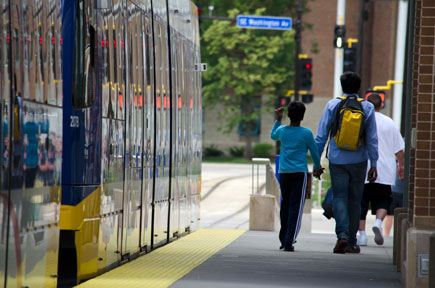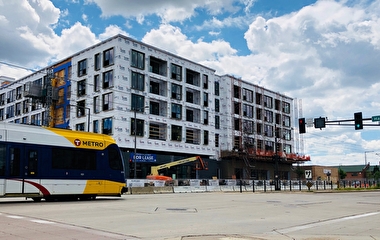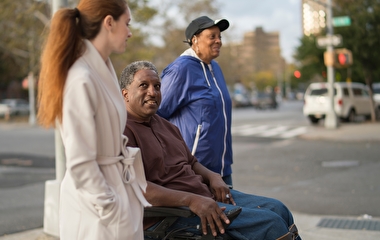As the millennial generation comes of age, indications of a significant generational change in travel behavior have raised hopes of robust growth in transit use. As a whole, this generation owns fewer cars, drives fewer miles, and uses transit more than previous generations. However, one key question remains: will millennials continue their high rates of transit use as the economy improves and they increasingly settle down and start families?
“In older generations we have seen significant declines in transit use that coincide with the transition to family life and child rearing,” says Andrew Guthrie, a research fellow and Ph.D. candidate at the Humphrey School of Public Affairs. To gain insight into the question of whether the millennial generation will be different, Guthrie looked for changes in the extent that two factors—young children in a household and access to a vehicle—affect transit use.
The study, conducted with Humphrey School associate professor Yingling Fan, looked for evidence of these bellwether changes in the Minneapolis–Saint Paul region between 2000 and 2010. This period saw the opening of the region’s first modern light-rail line as well as numerous bus system improvements, including a network of high-frequency local routes. In addition, the region has a strong, knowledge-based economy and has seen an in-migration of millennials.
The researchers used data from the detailed Travel Behavior Inventory conducted by the Twin Cities Metropolitan Council in 2000 and 2010 to compare travel behavior at both the trip and person levels.
Their analysis revealed that both young children in a household and access to an automobile have become “weakening obstacles” to transit use. “Specifically, research models show that participants with access to an automobile were more likely to use transit in 2010 than in 2000, and that participants with young children in their households were less likely than others to use transit in 2000 but not in 2010,” Guthrie says.
“Our models provide strong evidence that the basic relationship between transit use and the presence of young children in a household has changed, as has the relationship between transit use and access to an automobile,” Fan adds. “In fact, regardless of the specific modeling approach, these two traditional obstacles to transit use either weakened or disappeared entirely between 2000 and 2010 in the Twin Cities region.”
According to the researchers, the findings suggest that transit may now be better able to hold on to market share as its millennial users mature and start families, especially in urban areas where walk-and-ride trips are most common. In order to attract and accommodate these transit users, researchers believe ensuring an adequate supply of family housing and family-oriented community features such as high-quality schools and playgrounds in transit-served areas will be critical.
The research this paper was based on was part of a larger project funded by the Metropolitan Council and the Minnesota Department of Transportation. The paper was recently published in the Transportation Research Record.



